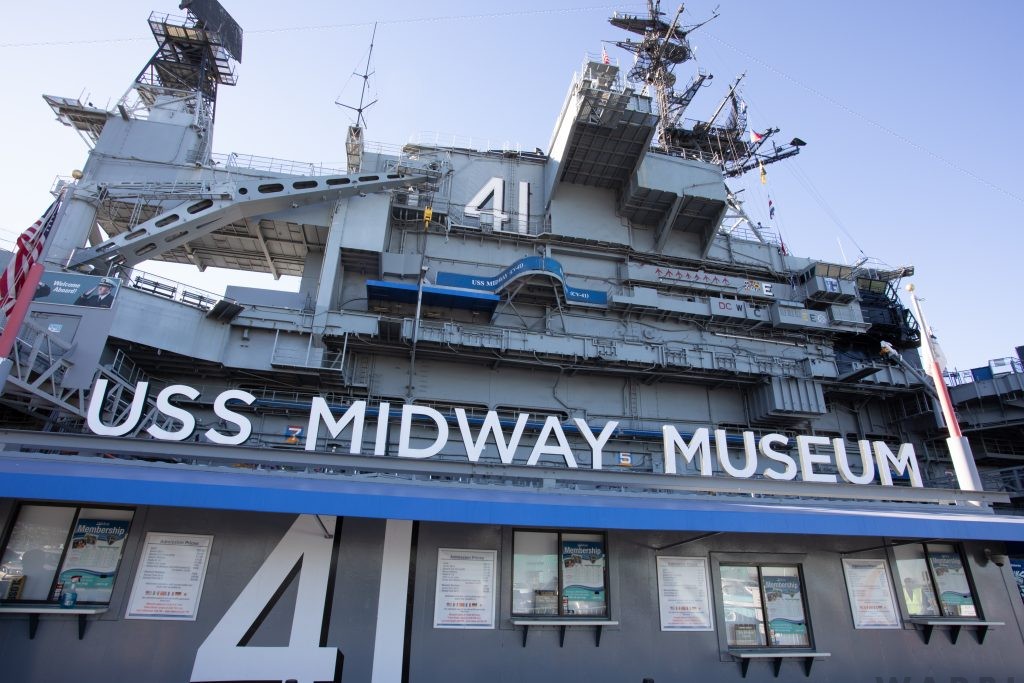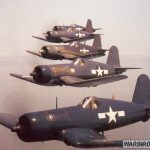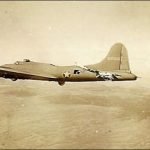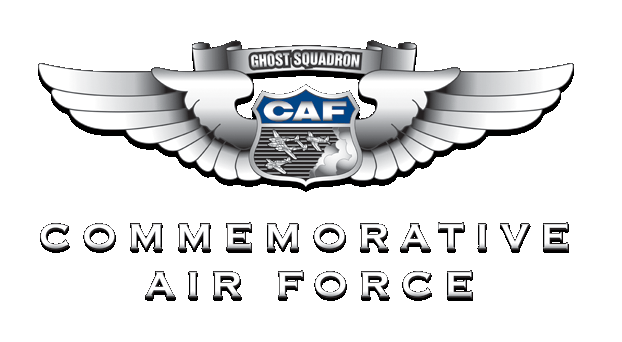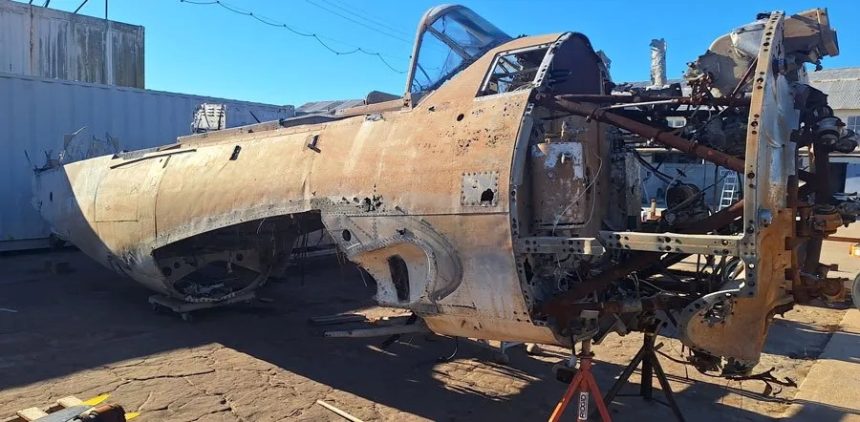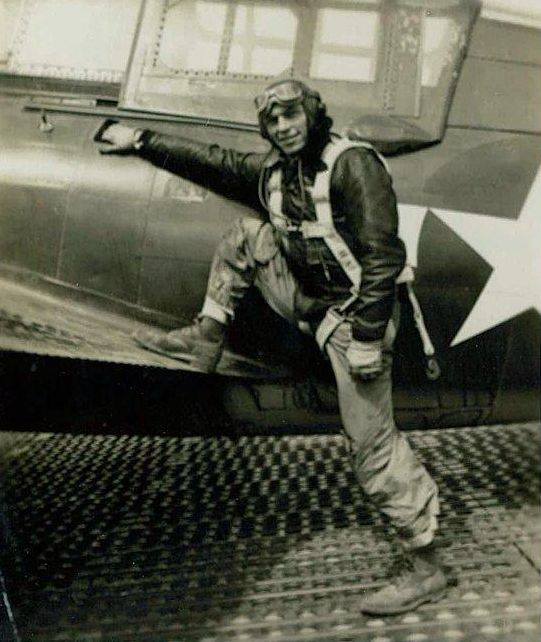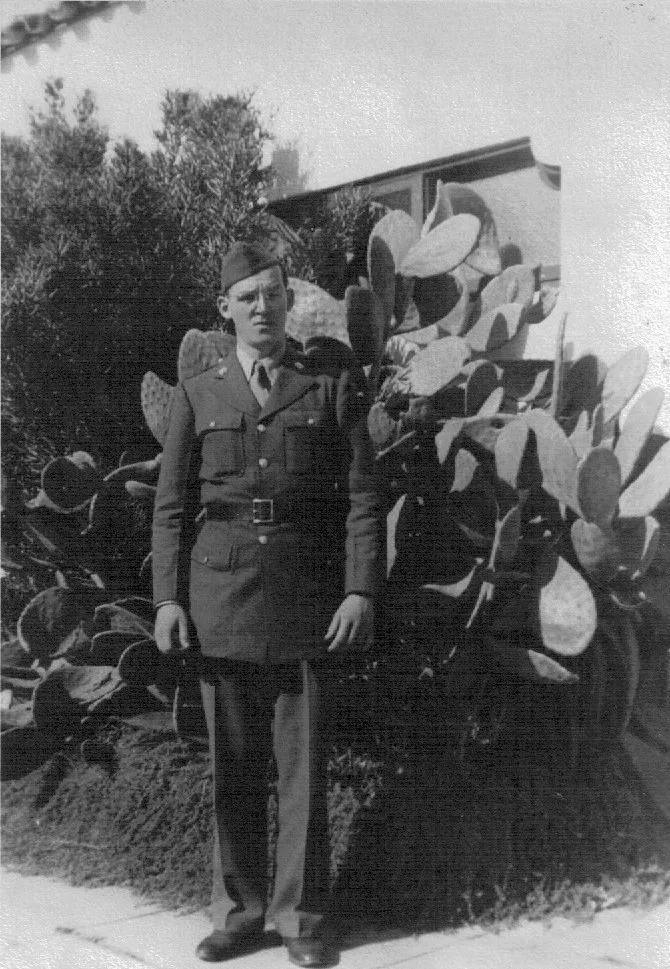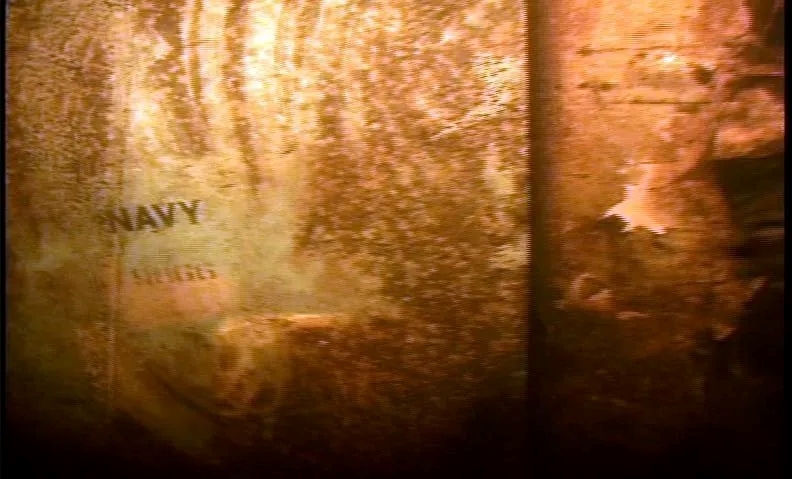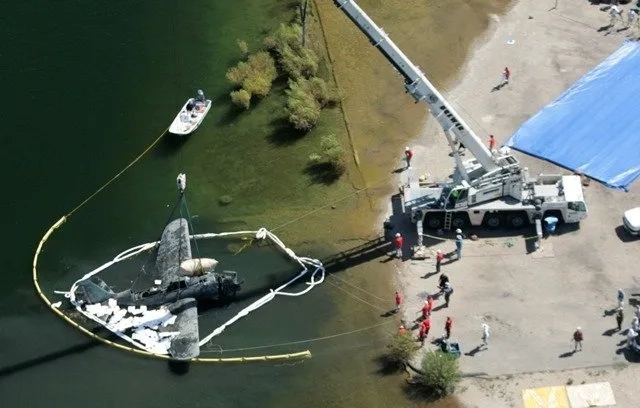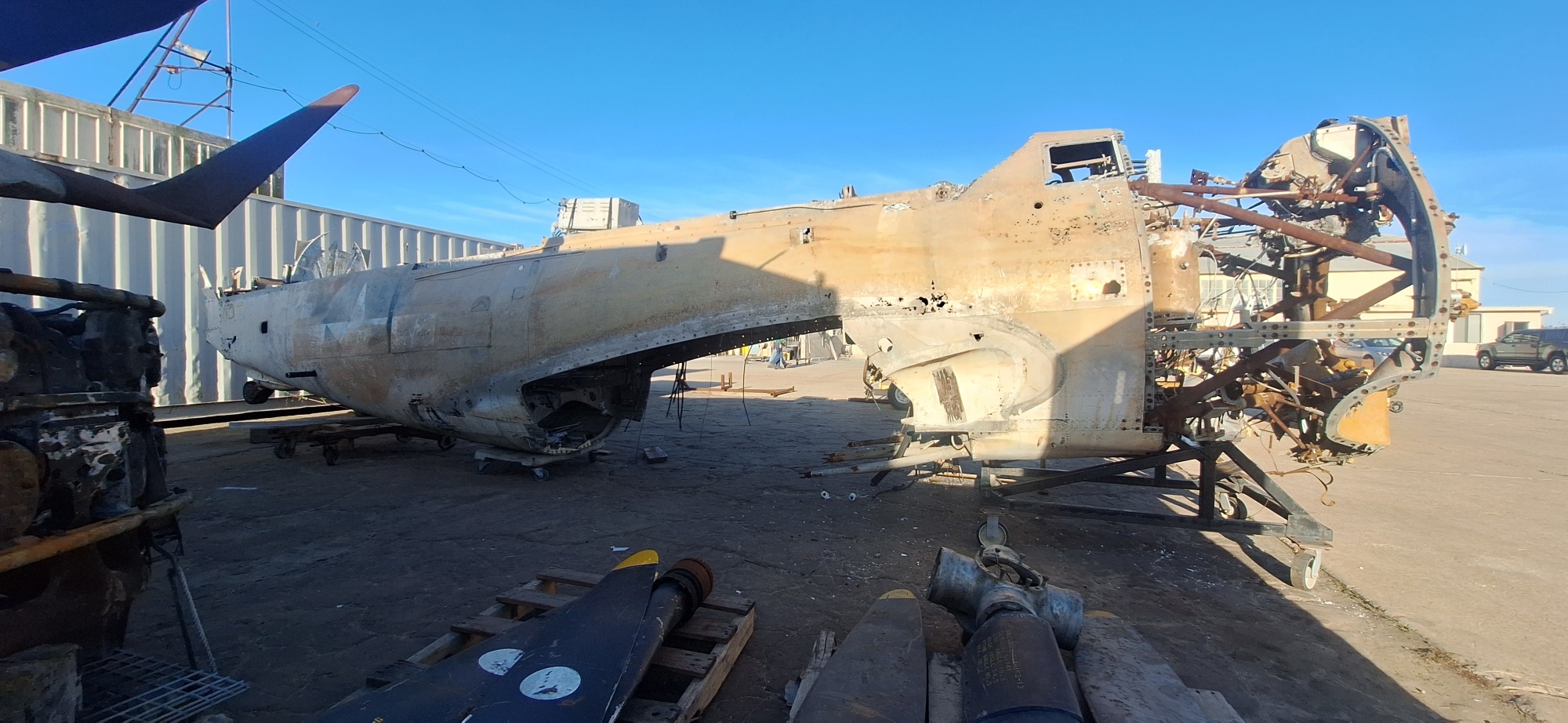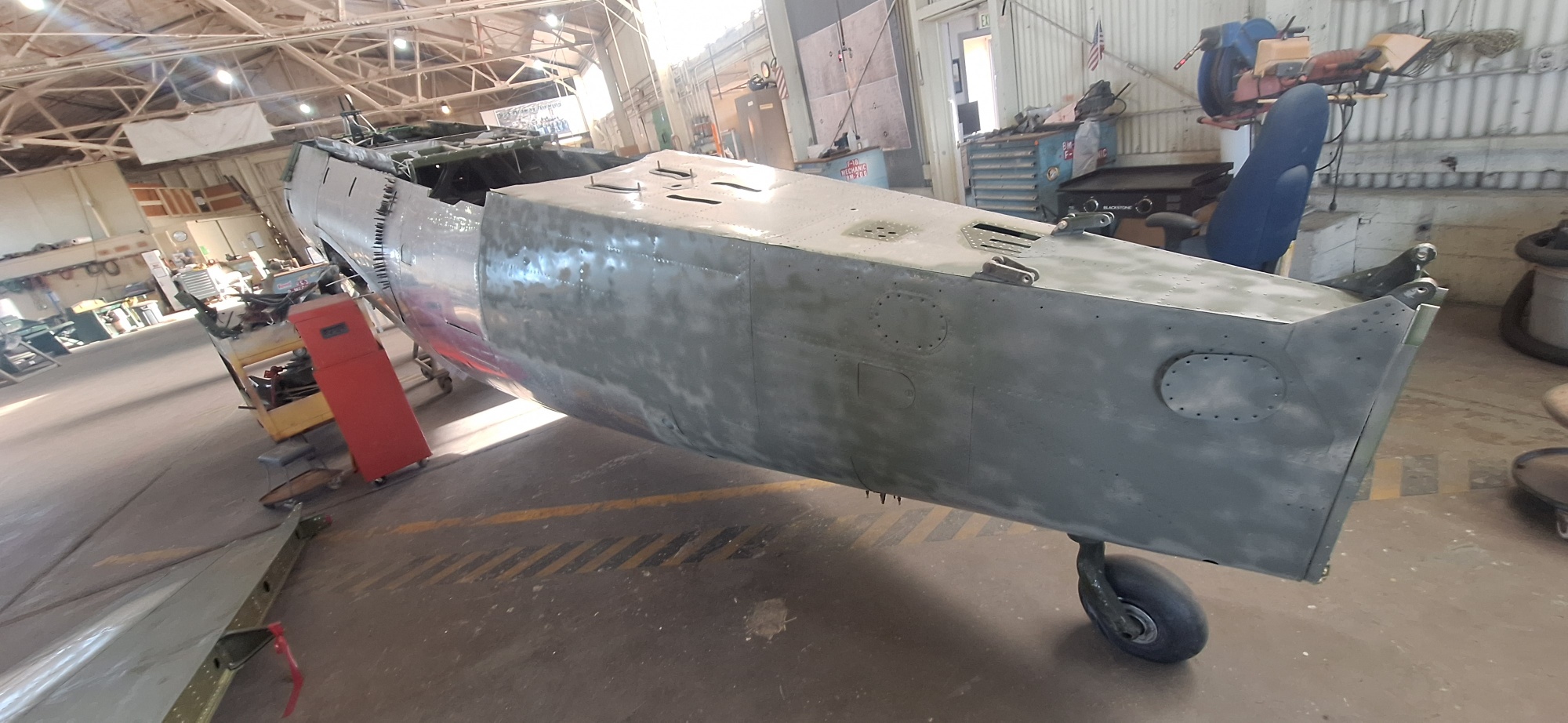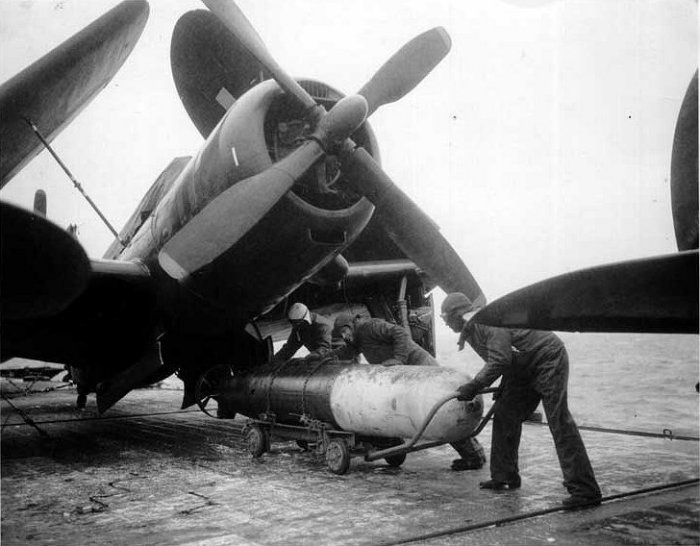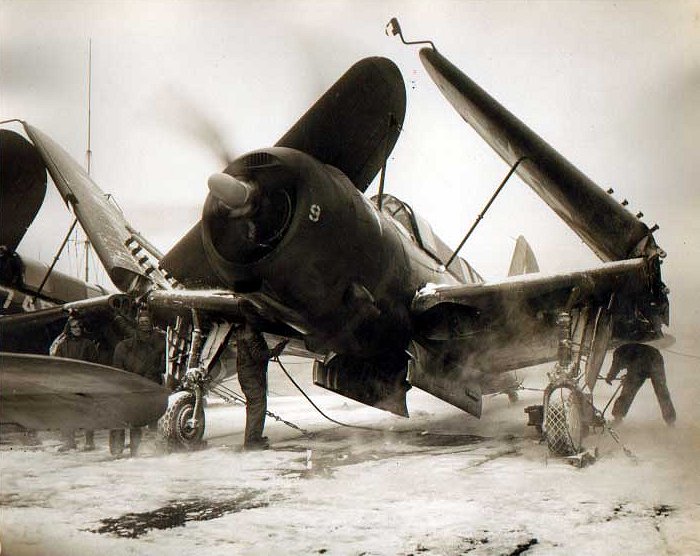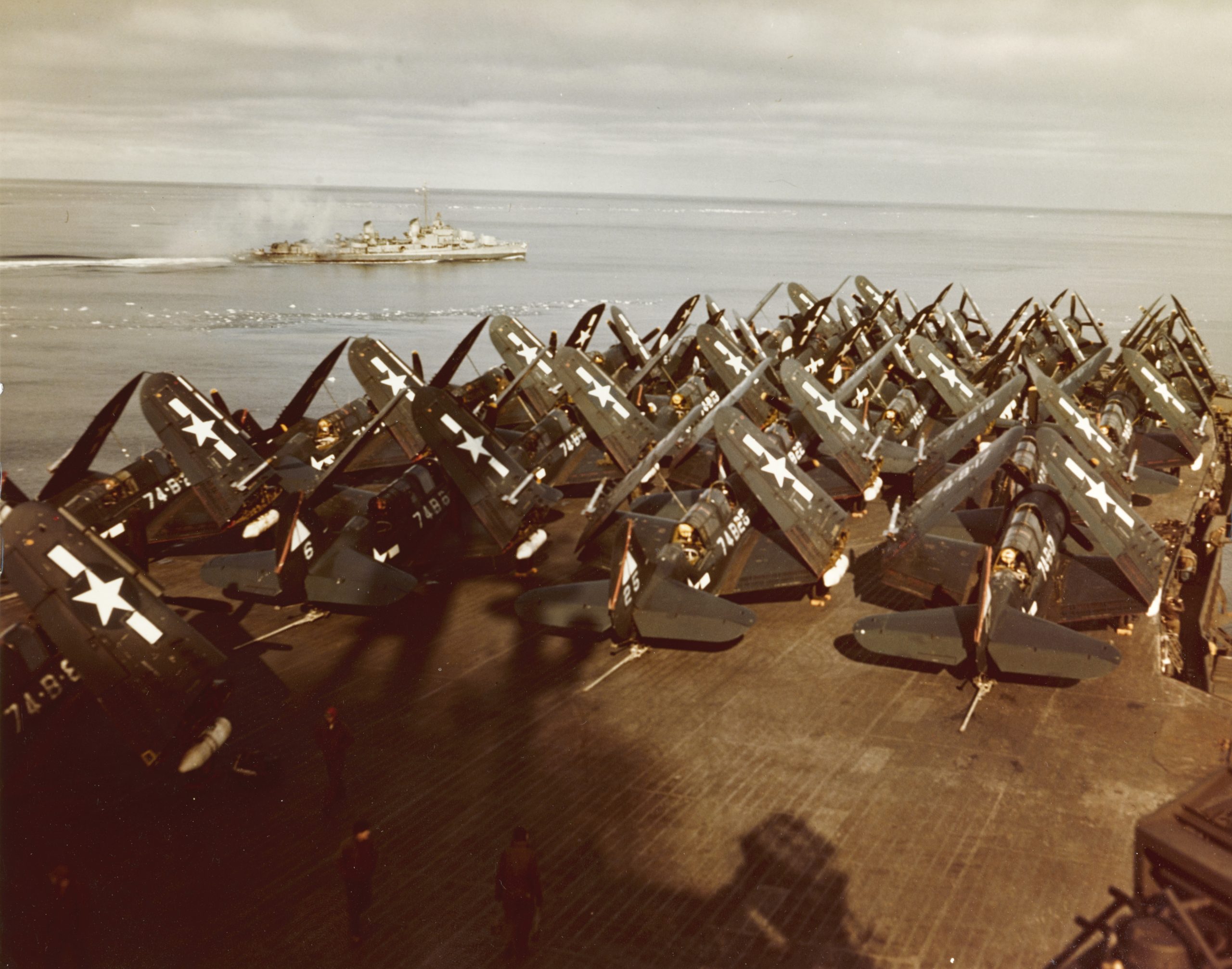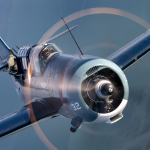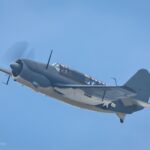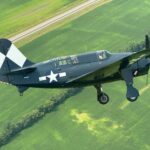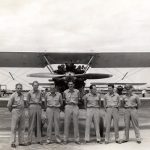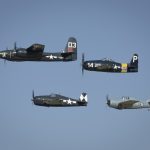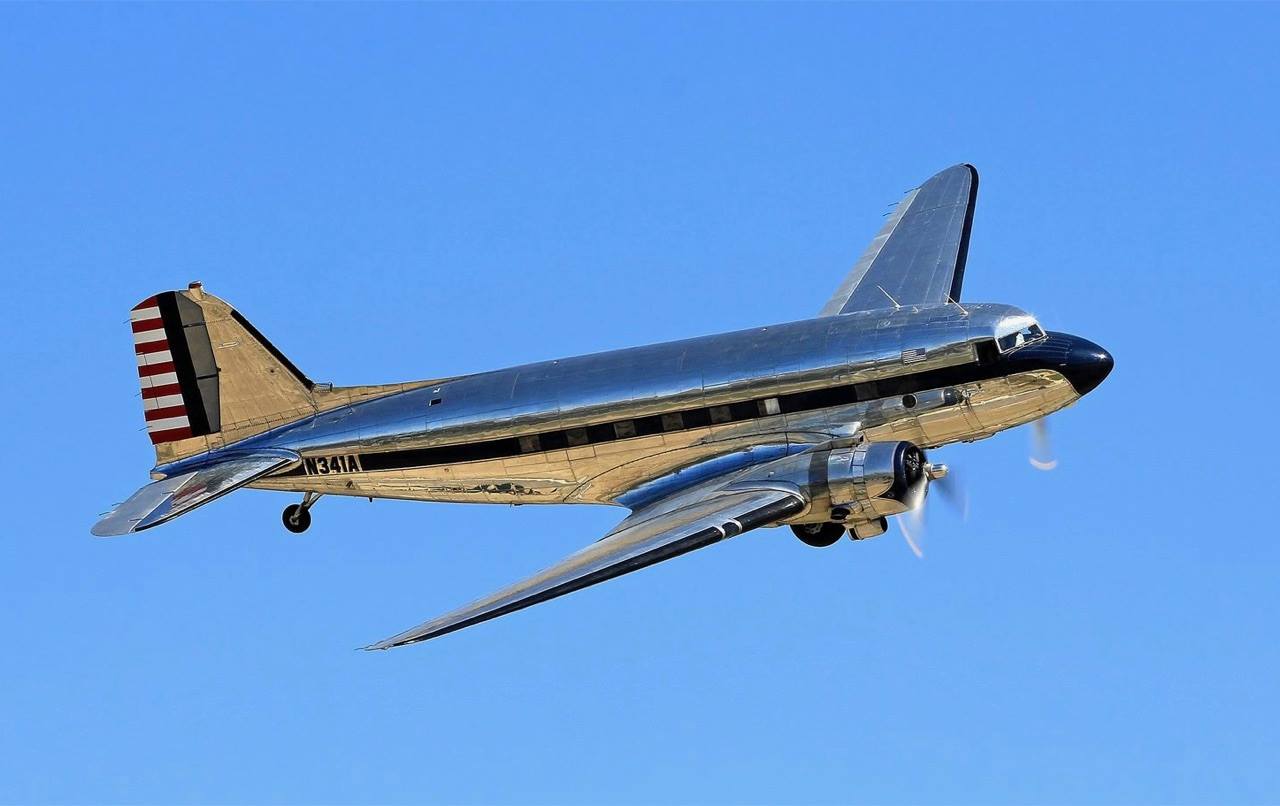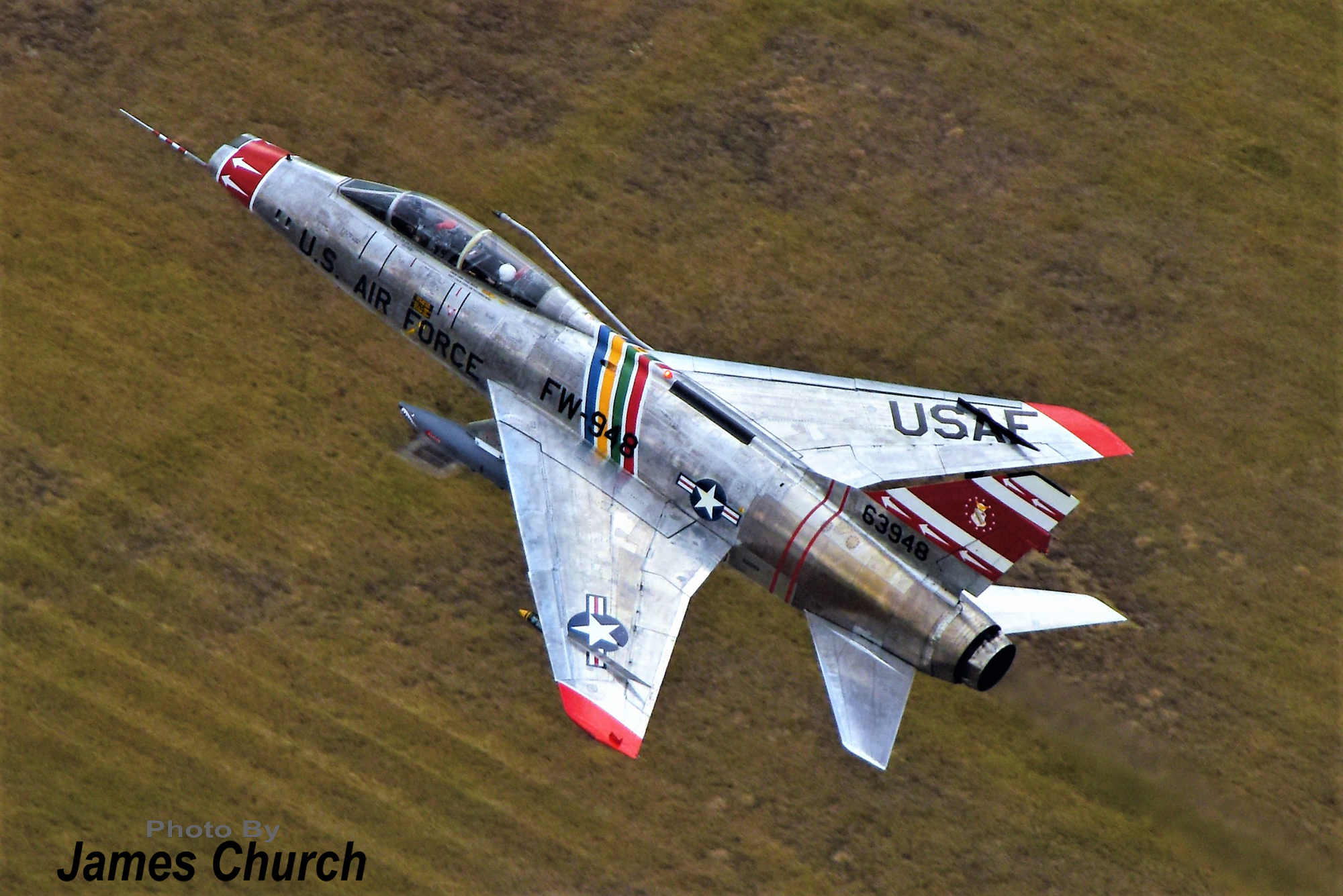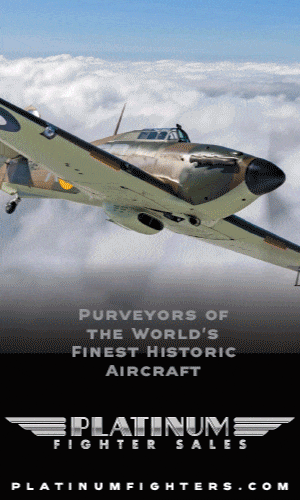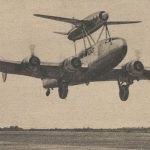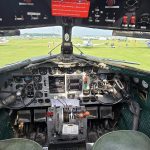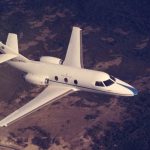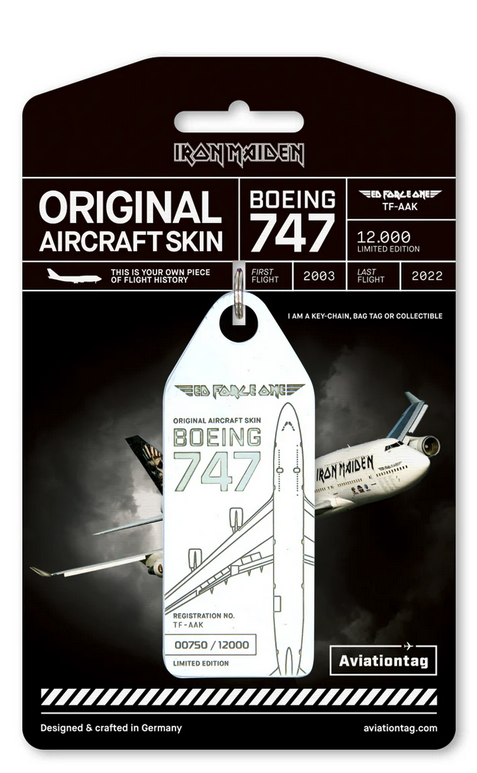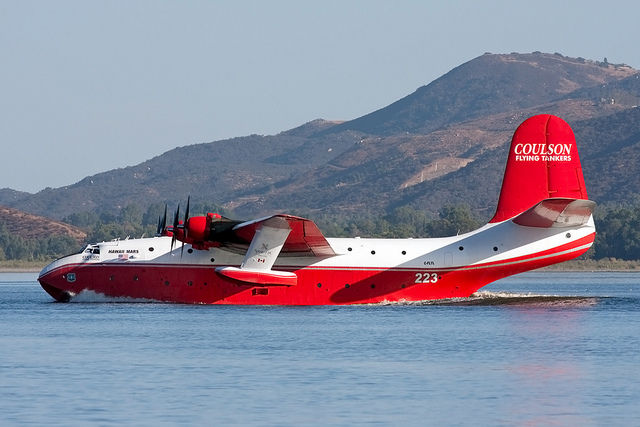At the start of this year, the USS Midway Museum in San Diego, CA, welcomed the arrival of a rare Curtiss SB2C-4 Helldiver WWII dive bomber. The aircraft will be restored for display on the retired aircraft carrier while remaining on loan from the National Naval Aviation Museum in Pensacola, FL. This turn also represents a homecoming for this aircraft, which made headlines more than 10 years ago for being raised from the depths of a local reservoir.
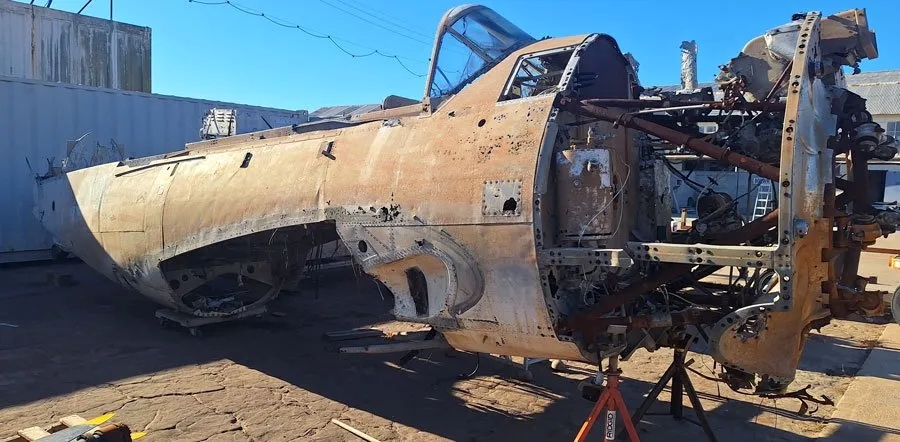
The Curtiss SB2C-4 Helldiver recently transferred to the USS Midway Museum was originally accepted into the US Navy’s inventory on July 25, 1944, and delivered two days later on July 27 under the Bureau Number 19866. By October 4, 1944, the aircraft was allocated from the aircraft reserve pool at Naval Air Station San Diego (now NAS North Island) to Bombing Squadron 84 (VB-84), which flew SB2C-4 19866 on training flights while the squadron’s assigned carrier, USS Bunker Hill (CV-17), was then going through an overhaul at the Bremerton Naval Shipyard (now Puget Sound Naval Shipyard), WA.
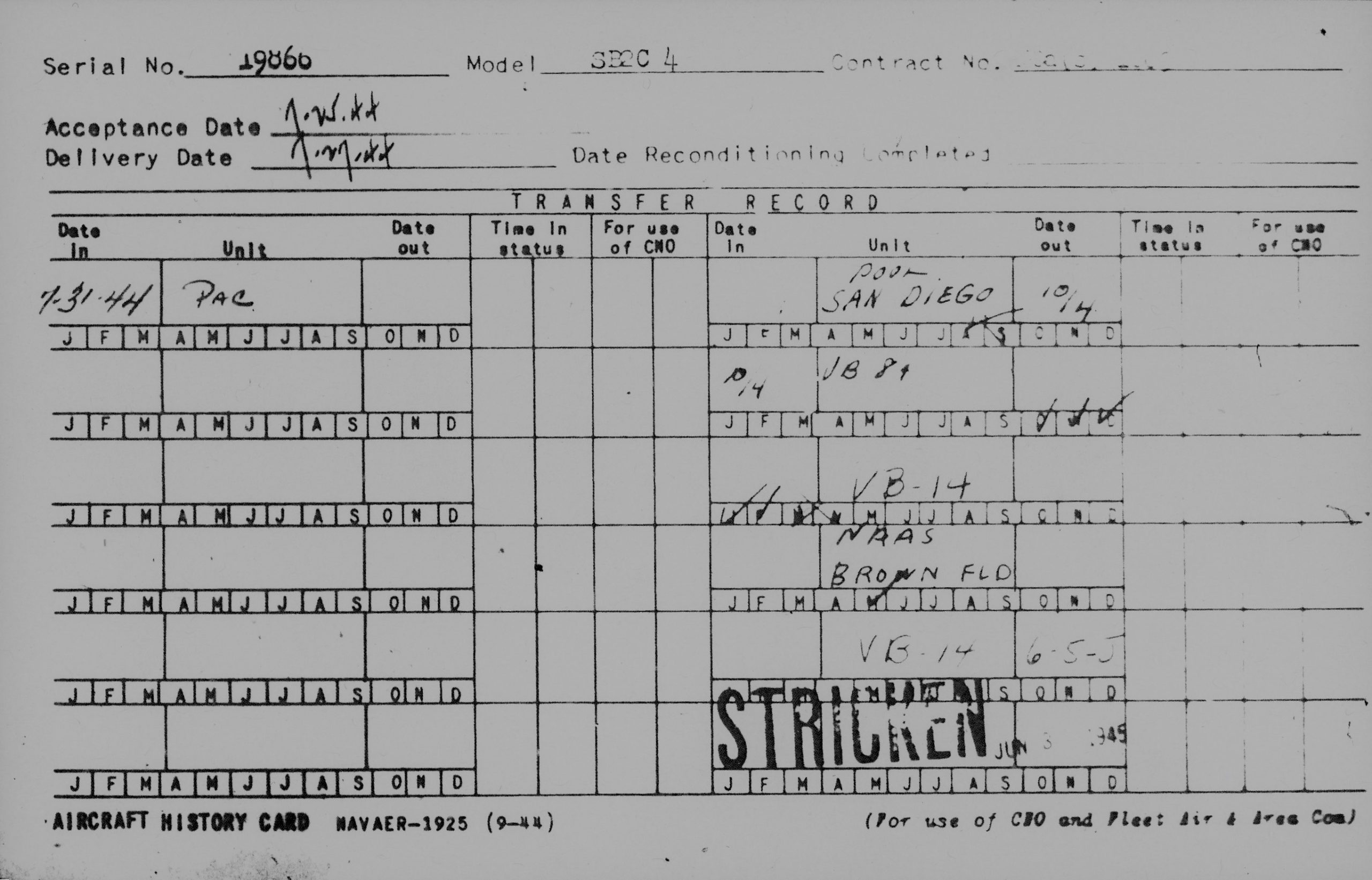
In January 1945, SB2C-4 19866 was reassigned to Bombing Squadron 14 (VB-14). VB-14 had previously seen combat while serving aboard the Bunker Hill’s sister ship, USS Wasp (CV-18). Now, the squadron was on shore assignment for flight training at Naval Air Auxiliary Station Brown Field in Otay Mesa, 14 miles southeast of downtown San Diego, CA, and just north of the U.S. – Mexico border, where the squadron received a batch of newly minted naval aviators, who would be trained to fly the dive bomber often called the “Beast” or the “Son of a Bitch, 2nd Class” for its less forgiving attributes.
Among the new crews was pilot Ensign Edward D. (E.D.) Frazar and gunner Robert Kofnovec. According to Kofnovec, the two met while training at Naval Air Station Pasco, WA, and recounted their first meeting in an article published by the San Diego Union Tribune, “He was a green pilot. I was a green gunner. I was 20, and he was 22. When they gave assignments and the pilots were looking for gunners, E.D. stood up and asked, ‘Is anyone in here from Texas?’ I stood up and said, ‘I am.’ And E.D. said, ‘You’re my gunner.’” The two young Texans trained in the air together in SB2C-4 19866, but on May 28, 1945, a mutual friend of Frazar and Kofnovec, U.S. Army Technical Sergeant Joseph M. Metz of Youngstown, Ohio, came to see them at Brown Field. Metz wanted to go on a flight with Frazar, and Kofnovec later recalled that he saw Frazar request permission from their commanding officer to take Metz up, which was soon granted. Shortly after this, Frazar and Metz strapped themselves in, with Metz taking Kofnovec’s place in the gunner’s seat, and took off for a local flight.
About an hour into their flight, Frazar decided to practice his dive bombing on a target set up on the Lower Otay Reservoir, putting the Helldiver into a steep, controlled descent. But then, the aircraft’s Wright R-2600 Twin Cyclone radial engine suffered a complete failure, leaving Frazar and Metz with no power. Unable to restart the engine or return to Brown Field despite following the normal starting procedures, and finding themselves too low to bail out, Frazar made a controlled ditching with wheels up, flaps down, on the southern end of the Lower Otay Reservoir, four miles northeast of Brown Field. As the SB2C-4 began to sink, Frazar and Metz made a hasty exit and swam to shore unharmed.
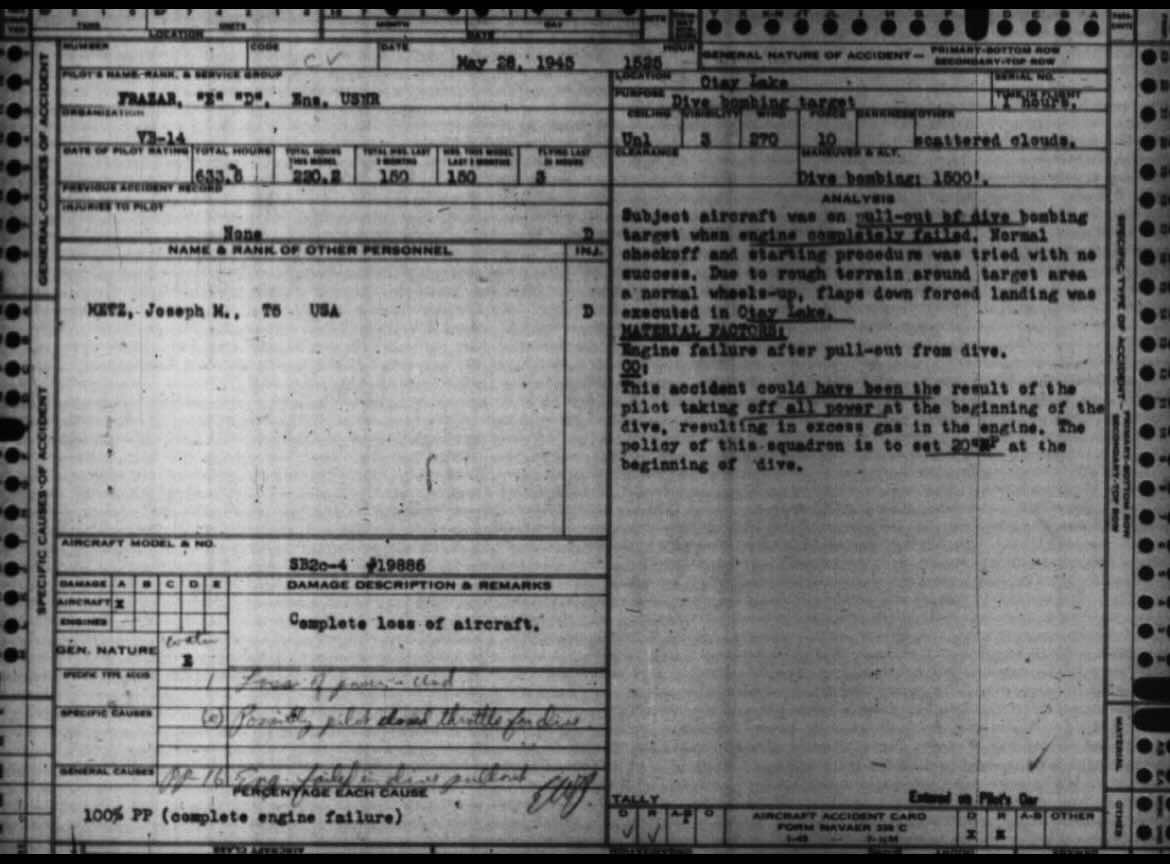
Curtiss SB2C-4 19866 was officially stricken from the Navy’s inventory on June 3, 1945, while E.D. Frazar and Robert Kofnovec were later shipped off to Hawaii for further flight training with VB-14 before being assigned to the carrier USS Intrepid (CV-11). Still, on August 15, 1945, the Japanese surrendered before the two young airmen could see combat. With the war having ended, Frazar, Kofnovec, and Metz all survived and lived quiet lives after leaving the military, and their Curtiss SB2C-4 Helldiver was all but forgotten to history.
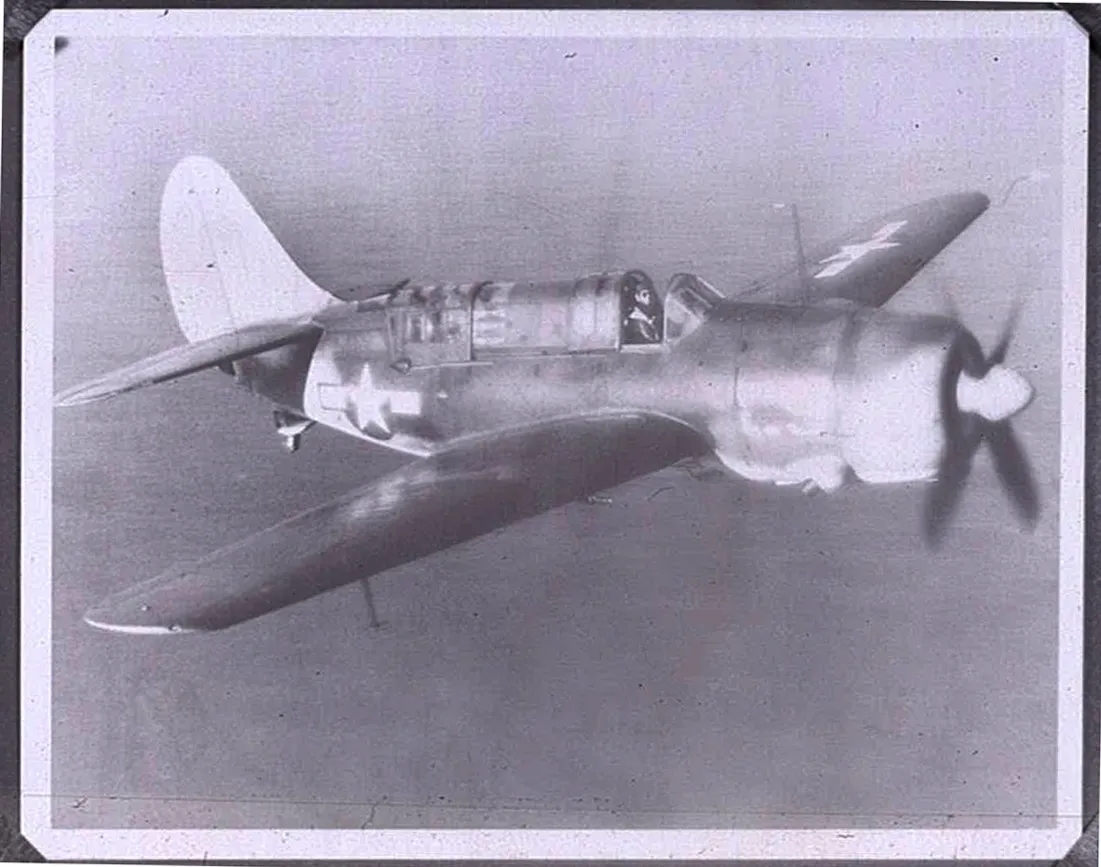
Then, in February 2009, two friends named Duane Johnson and Curtis Howard went fishing on their boat in the Lower Otay Reservoir. Along with their fishing poles, they had a fish finder scanning the reservoir floor for any sign of a good catch. Then, Johnson spotted what looked to be the profile of an airplane, sitting on the bottom of the reservoir. Intrigued by the discovery, Johnson called Brown Field Municipal Airport to see if they knew of any airplanes that had gone down in the lake, but no planes were missing from their records. The staff at Brown Field then suggested that Johnson call the offices of the FAA. Through their contacts in the US Navy, the FAA informed Johnson that it was a Navy plane, later revealed to be the Curtiss SB2C-4 Helldiver, that had been lost for sixty-four years. While the Navy had known the Helldiver was down there, Johnson and Howard’s discovery confirmed the exact location of the airplane within the reservoir, which was previously unknown to the Navy. Seizing upon the opportunity to have the aircraft recovered, the National Naval Aviation Museum in Pensacola, Florida, contracted the services of divers Allan Olson and Taras Lyssenko, whose Chicago-based firm A & T Recovery has spent decades recovering WWII naval aircraft from the bottom of Lake Michigan on behalf of the NNAM. Now, they would bring their gear and their expertise to the Lower Otay Reservoir and formulate a plan to recover the intact Helldiver safely.
On the scene to watch the recovery was Robert Kofnovec, who had moved to San Diego after the war, and eagerly awaited the recovery of his old Helldiver, while standing with Edward Frazar’s son Richard Frazar, an attorney who flew his own single-engine airplane to Brown Field, while Robert Metz, younger brother of Joseph Metz, was also in attendance. Unfortunately, neither E.D. Frazar nor Joseph Metz lived long enough to see this moment, but it was certainly a proud moment for their families, who were there to see it happen. Another of the officials on site was Bob Rasmussen, then Director of the National Naval Aviation Museum.
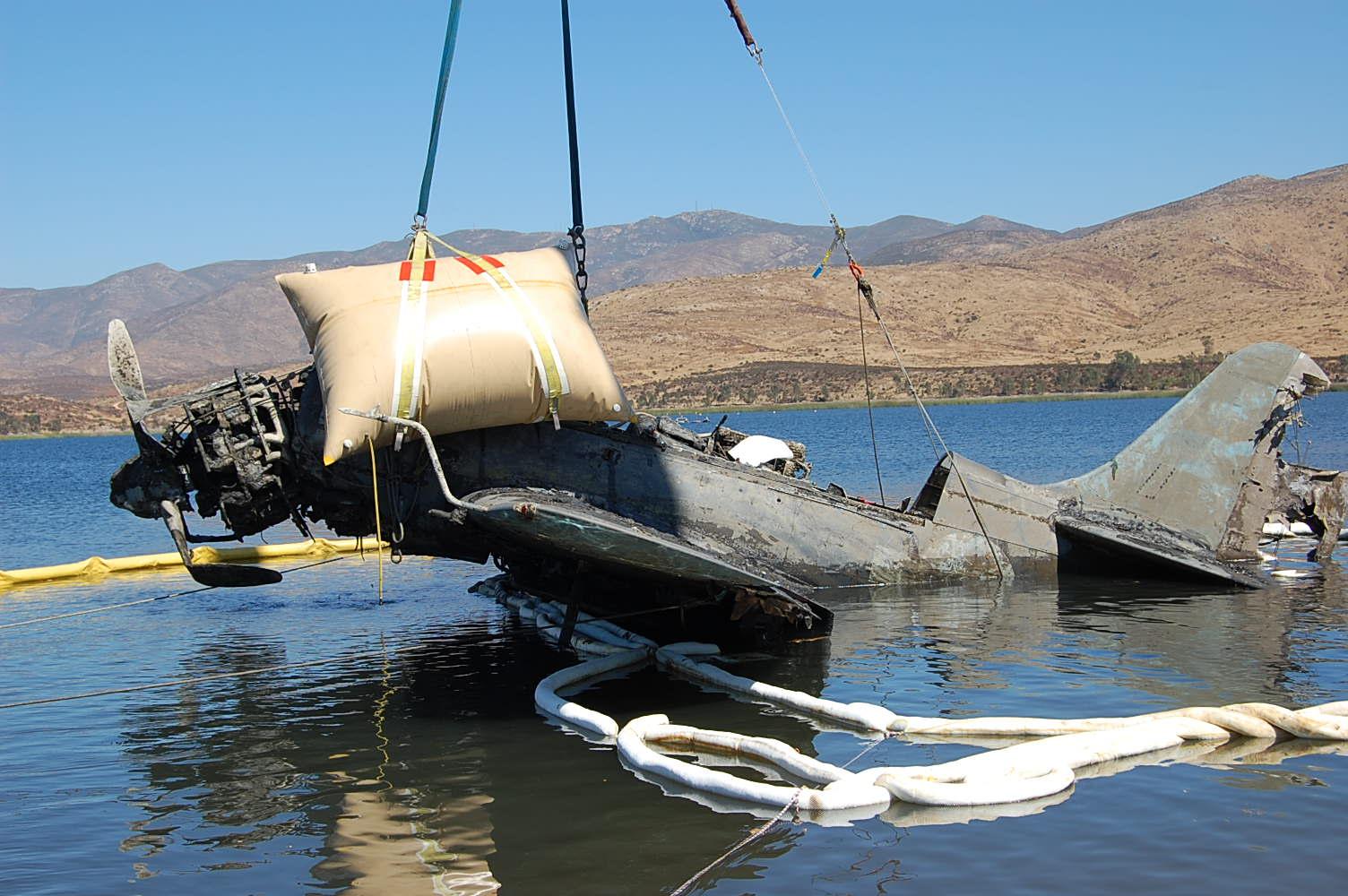
Between August 17 and 20, 2010, A & T Recovery divers worked to recover the Helldiver, resting 90 feet below the reservoir’s surface and with the lower section deep in the mud. The recovery also involved local environmental professionals who took precautions to ensure that the fuel, oil, and hydraulic fluid would not leak from the airplane and contaminate the reservoir’s supply of drinking water for the city of San Diego. Additionally, the team had to remove the layers of mud and sediment that had built up inside the plane to lessen the strain on the aircraft’s structure during its gradual rise to the surface. After working for three days to extract the aircraft from the bottom and remove as much sediment as possible while underwater, the Helldiver was brought to the reservoir’s surface on August 20, and the Helldiver was lowered near the boat dock off Wueste Road, where the aircraft’s engine, supported only by its lower mounts, was removed and placed beside it. Additionally, much of the aircraft’s canopy was removed and brought to shore before the rest of the aircraft, and several loose artifacts were also carefully removed, including the original parachute discarded by Frazar when he swam from the sinking plane 65 years prior.
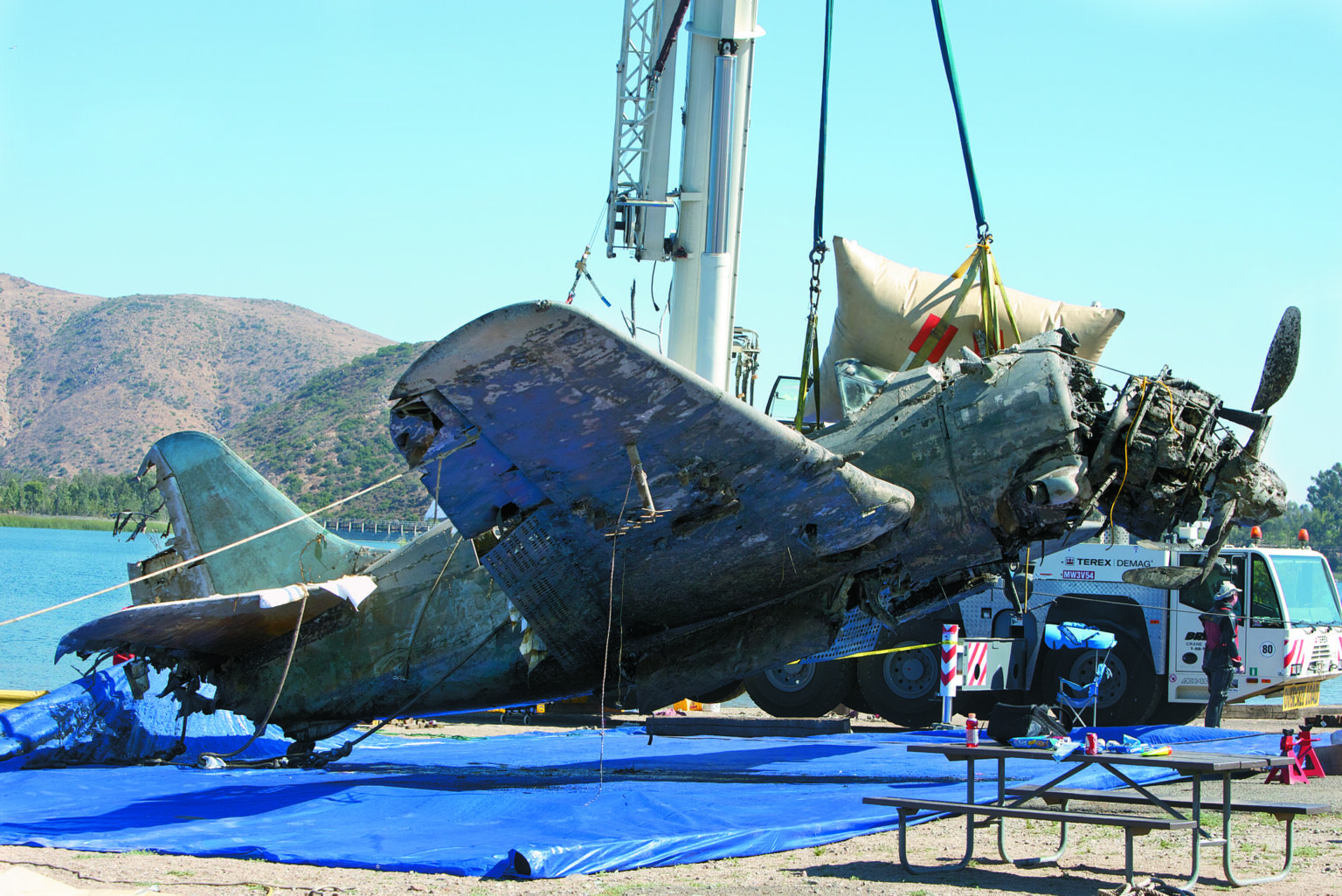
Before the rediscovery of Helldiver 19866, the National Naval Aviation Museum had previously had another Helldiver on display in their museum, as the Smithsonian Institution National Air and Space Museum had loaned them SB2C-5 BuNo 83479 from 1975 to 2003 before it was eventually returned to the Smithsonian and was later restored and placed on display at the Steven F. Udvar-Hazy Center in Chantilly, VA. With that, the Naval Aviation Museum worked with the San Diego Air and Space Museum to help facilitate the transfer of BuNo 19866 to Pensacola. The aircraft was taken from the reservoir to the San Diego Air and Space Museum’s Gillespie Field Annex in El Cajon to have more mud and sediment washed off and prepare the aircraft for its overland journey to Pensacola, arriving in Florida later that year.
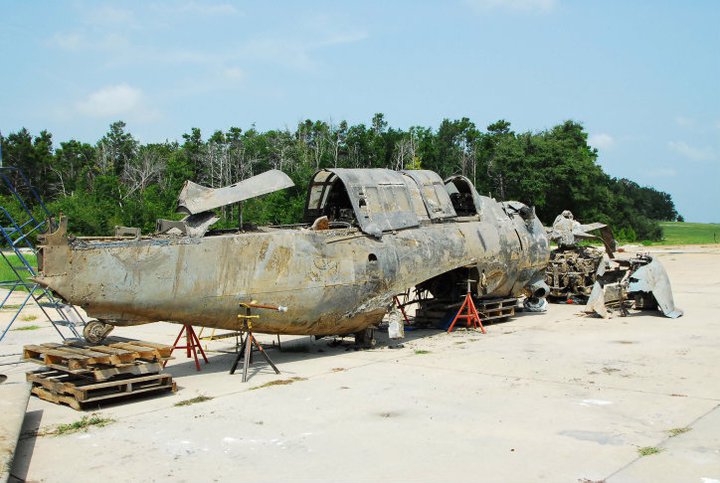
The National Naval Aviation Museum always intended that the Helldiver would be restored for static display at Pensacola, but over the next 14 years, the aircraft was kept outdoors on the flight ramp where the museum displays and stores other aircraft it cannot place indoors. Unfortunately, the elements of the Florida Gulf Coast, namely the salt air and humidity, were not conducive for the aircraft, and space in the nearby restoration hangar was filled up with other projects. Then, in 2019, the National Naval Aviation Museum received another Helldiver restoration project. This was a Curtiss A-25A Shrike, an Army Air Forces’ variation of the SB2C-1 variant. However, by the time the A-25 was developed for the USAAF, fighter aircraft already in combat such as the P-47 Thunderbolt were already being used in the ground attack role, and thus the USAAF primarily kept their A-25s as trainers and target tug aircraft while transferring 410 airframes to the Marines, who called them SB2C-1As.
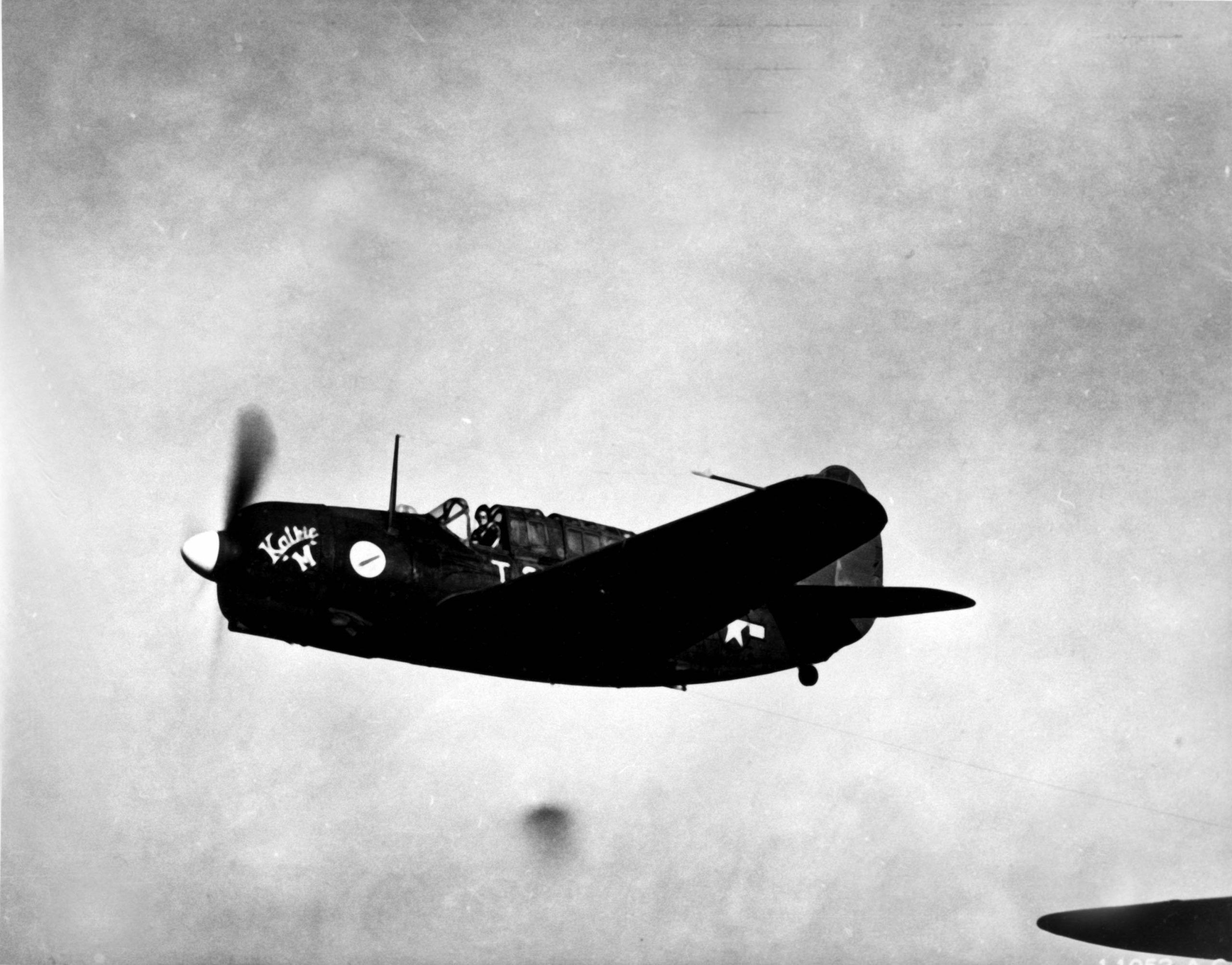
Among these -1As was ex-A-25A 42-80449, which received the Navy Bureau Number 76805 and was assigned to Naval Station Puget Sound (NAS Seattle) on Lake Washington. At the end of the war, 76805 and two other SB2C-1As (BuNos 00020 and 75552) were stripped of their components, set on fire for fire-fighting training, then dumped into Lake Washington, where they rested for over 40 years until being raised from the lake by Recovery Services Ltd. One of these SB2C-1As, BuNo 75552, was later restored to airworthy condition by the National Museum of WWII Aviation in Colorado Springs (link to our coverage of 75552’s first post-restoration flight HERE).
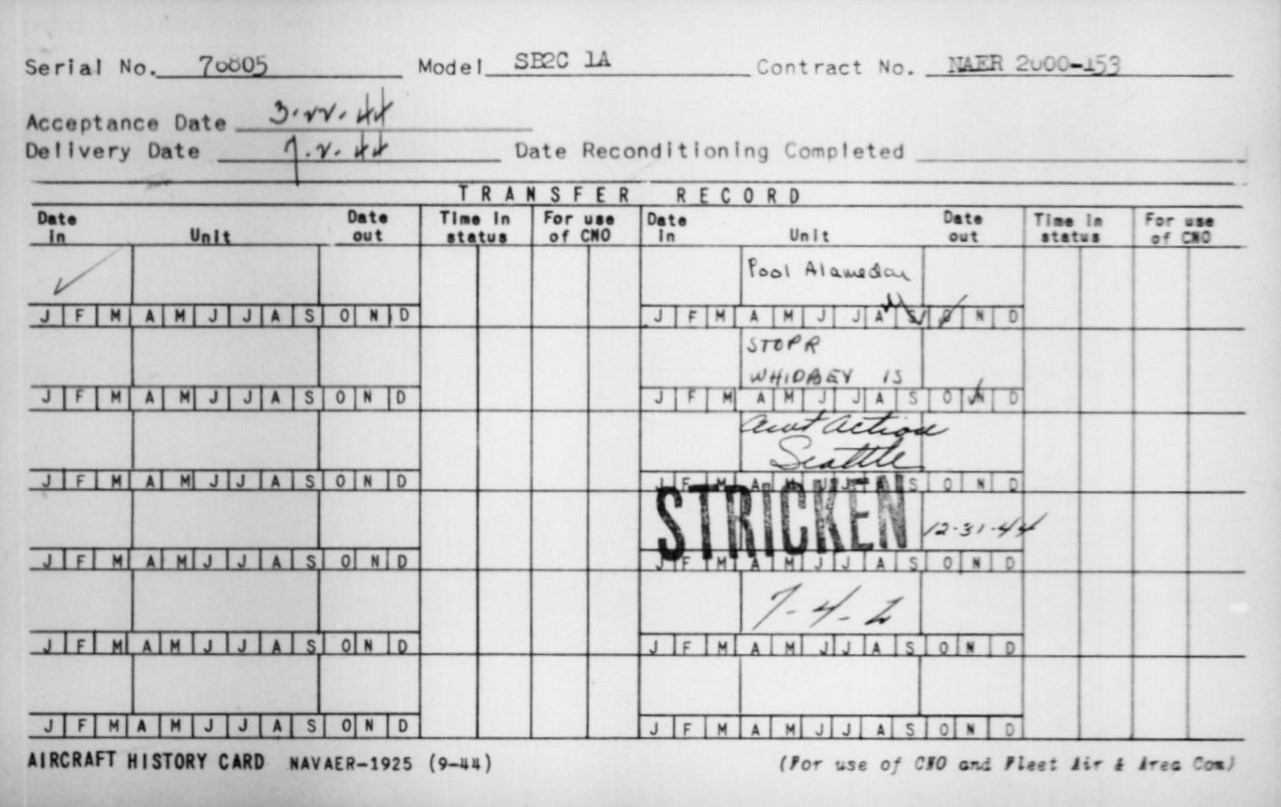
BuNo 76805, meanwhile, would see its restoration begin under the guidance of warbird restorer Mike Rawson before it was sold off to the National Museum of the United States Air Force to be restored for display in its stock A-25A Shrike configuration. Unfortunately, this restoration was never completed, as the NMUSAF found itself busy with the restoration of other aircraft, and the Shrike, after being offered for exchange, was sent to Pensacola along with components from two other airframes to serve as a source of spare parts for the restoration of SB2C-4 19866. Yet even with the arrival of SB2C-1A 76805, no restoration work began at Pensacola.
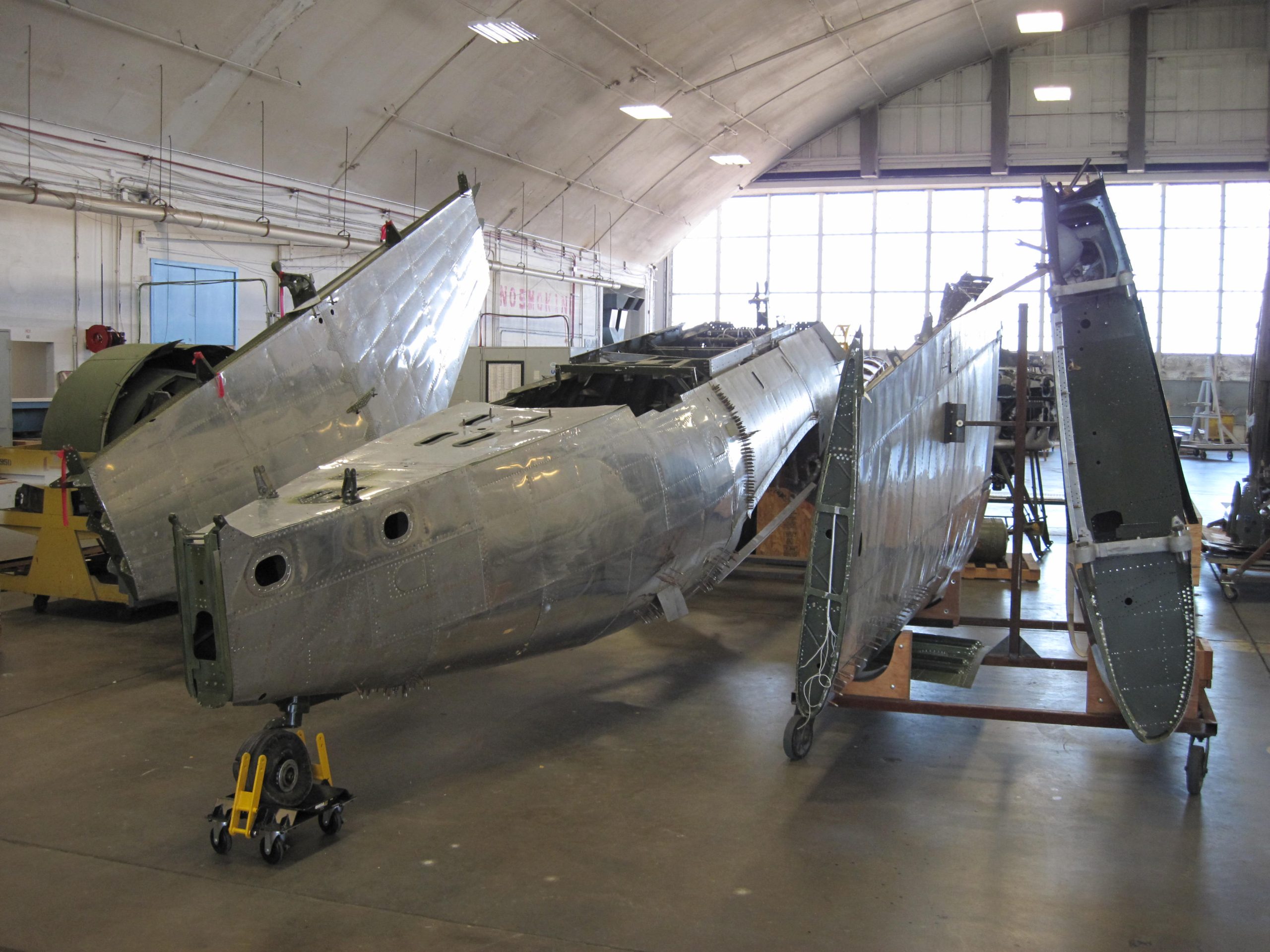
The end of 2024, however, would see a big turn of events for the two Helldivers, as it was decided, shortly after the National Naval Aviation Museum transferred a Vought F4U-4 Corsair to the USS Midway Museum (see our article HERE) that the NNAM would also transfer both of their Helldivers to the USS Midway Museum, where SB2C-4 BuNo 19866 will be restored with parts from A-25A 42-80449/SB2C-1A BuNo 76805 and be placed on display aboard the Midway while remaining on loan from the NNAM. Though BuNo 19866 will be displayed aboard the Midway, BuNo 76805 will still be subject to the NNAM’s discretion to either bring back to Pensacola or send to another museum affiliated with the NNAM. As of writing, the two Helldivers have been brought to Hangar 805, the Midway’s restoration hangar inside NAS North Island. Midway museum curator David Hanson commented about the arrival of the Helldivers, saying, “After the cross-country trip from Pensacola, the two airframes arrived in San Diego in late 2024, and were delivered to the Midway Museum’s aircraft restoration hangar across the bay at Naval Air Station North Island. There a small team of mostly volunteers will restore the pieces and eventually produce a display-worthy Curtiss SB2C for the Midway’s hangar deck. The process will no doubt take many years, but we look forward to hosting this rare aircraft onboard, especially as it was the first bomber to deploy on the Midway in the ship’s first year of service (1945).”
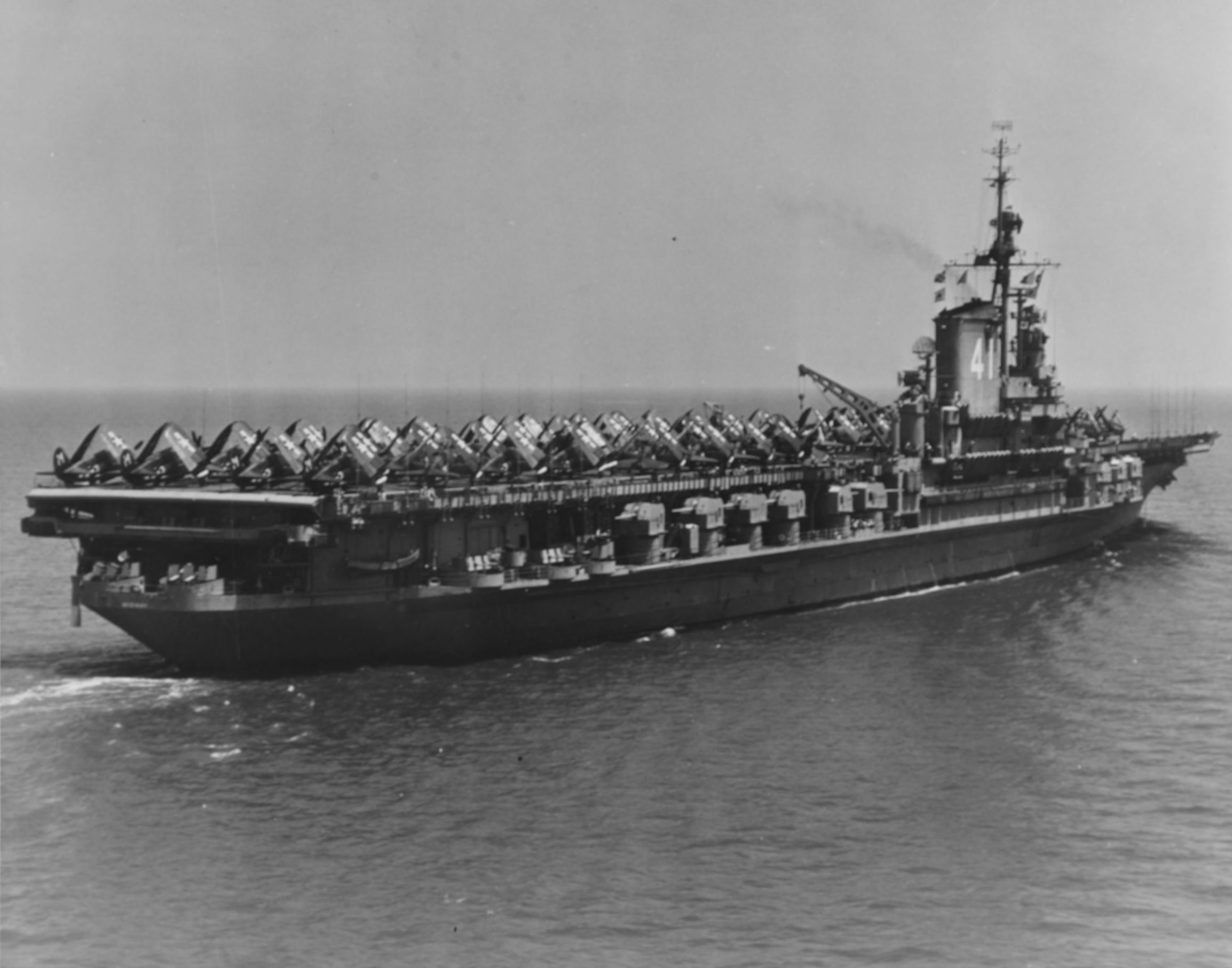
As Hanson alluded to, the Curtiss SB2C Helldiver played a role in the first deployment of the USS Midway. When the Midway was commissioned on September 10, 1945, just eight days after the official surrender of Japan, the first aircraft to fly from her decks were Curtiss SB2C Helldivers, General Motors-built TBM Avengers, and Vought F4U Corsairs as part of Carrier Air Group 74, with the Helldivers aboard Midway being assigned to Bombing Squadron 74 (VB-74), nicknamed the “Bomb-a-Toms”, and to Torpedo Squadron 74 (VT-74), nciknamed the “Beasts”.
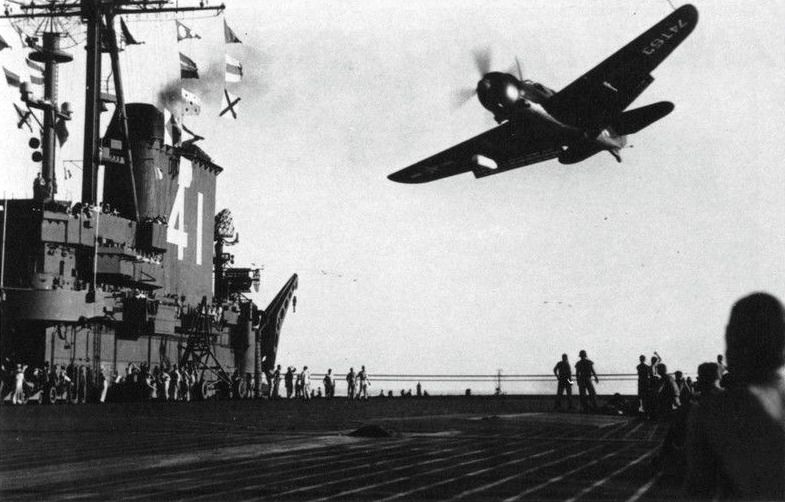
These Helldivers also operated from the Midway during Operation Frostbite, which saw the Midway lead a task force from Hampton Roads, VA, to the Davis Strait between Labrador and Greenland, where the deckhands and flight crews operated in Arctic conditions to demonstrate how US carriers could perform air operations in the event of the outbreak of a war with the Soviet Union in the Arctic. The carrier also served as a test bed for new aircraft types during Operation Frostbite, such as the Grumman F8F Bearcat, Ryan FR-1 Fireball mixed-propulsion fighter, and Sikorsky HNS-1 helicopter. Following Operation Frostbite, the Midway’s complement of SB2C Helldivers remained until 1947, when the US Navy’s remaining Curtiss SB2Cs were relegated to Naval Air Reserve units, and the role of the dive/attack bomber aboard carriers such as the USS Midway was filled in by the Douglas AD Skyraider (later redesignated the A-1).
In a sense, the restoration of Curtiss SB2C-4 Helldiver 19866 will represent its story coming full circle in two ways; the fact that it will be restored and displayed 16 miles from the place where it rested quietly for sixty-five years, and that it will become the first SB2C Helldiver aboard the USS Midway in nearly 80 years. The restoration has only just begun, but when the restoration volunteers working at Hangar 805 have completed the aircraft, we will eagerly await the arrival of an aircraft that deserves to finally be restored to its former glory. For more information, visit the USS Midway Museum’s website HERE
